Most durable & low maintenance: Hardie, brick, or stucco?
jellohouse
4 years ago
last modified: 4 years ago
Featured Answer
Sort by:Oldest
Comments (59)
Virgil Carter Fine Art
4 years agoloobab
4 years agoRelated Discussions
Low maintenance roses?
Comments (19)In my experience David Austins are very high maintenance - of course I've only ever bought them bare root -- so I guess if you bought them as bigger potted roses they wouldn't need to be coddled as much. I have a William Baffin that is 9 feet tall, reblooms in late July/Early August -- but did get Black Spot early this Spring when it wouldn't stop raining. It was the first time I had Black Spot on any of my roses. Knock out is very resistant -- shade tolerant and relatively drought-resistant (for a rose). I use Knock-Outs as ground-cover roses in my front yard, where the hose doesn't reach, so they depend on me remembering to water them. But even if you are growing organically, there are things that you can use to keep disease, bugs and weeds away. I am allergic to most of the chemical sprays and have great success with things that I got from the Gardens Alive catalog. (I don't work for them, I'm just giving my seal of approval -- for what it's worth) Here is a link that might be useful: Garden's Alive...See MoreShould I upgrade to all brick or stick with Hardie?
Comments (16)live_wire_oak, Nichia was .60 MORE per board than the Hardie. Go figure... athensmom - I absolutely agree re: mixing of materials and that's something I'm REALLY struggling with here. If we don't brick the front gables I'd use either Hardi shake or board & batten in hopes of recapturing some of the country look even though it's not technically correct. Lexmom - thank you for the kids words about the location! I grew up here and have such strong ties to that plot of land. My Dad planted many trees on special occassions such as his anniversary and for birthdays and even though he's long gone, my Mom can still remember which tree was for which occassion - it's a living history I can pass along to my kids! I know I shouldn't care what others think but sided homes, even Hardi, are *really* looked down on around here. In the neighborhood across the street an absolutely gorgeous home was built with board and batten Hardie and stone - not a cheap combo by any means. The neighbors, however, felt it 'cheapened' the 'hood and the HOA basically drove those people out of there. It's been 6 years and people STILL talk about 'that sided house.' It's pretty pathetic but I also run a boutique type business out of my home and appearances matter - many people I deal with on a daily basis are more impressed with what people have than who they really are or how they treat others, unfortunately....See MoreConverting hardy wood siding to stucco?!
Comments (4)I am not sure the siding needs to come off. We had our house stucco'd right over the masonite siding and it made a world of difference in the energy to heat and cool. They attached a 1" sheet of foam board(styrafoam) over the siding, then a mash covering and then the stucco. You will not believe the difference. We also installed new insulated low E windows while we were doing it. Cost for the stucco was comparable to other siding at a little over $5 sq ft. Sounds like it would be great in your case as we had a similar condition. No painting and maintenance free so far....See MoreHardie plank and stucco
Comments (27)This is a small house. The right elevation depicts a living room window, master shower and 2nd floor bedroom. Small lot with homes on either side so I wasn't too concerned with the look of the sides. Agree, elevations aren't detailed enough. The builder and I acknowledge that. House is southern facing on small lot and we actually do have many homes with dark roofs here in FL. I'm definitely not using stucco panels. It will be the "usual" stucco typically used in FL. How about a medium toned brick on the front, say near or at the botttom of the window line, stucco above that and then Hardie above the front porch? Then with the stucco sides it wouldn't be such a drastic switch from all Hardie front to then stucco sides?...See MoreAnglophilia
4 years agofunctionthenlook
4 years agoCharles Ross Homes
4 years agoDLM2000-GW
4 years agoBT
4 years agolast modified: 4 years agoVirgil Carter Fine Art
4 years agoPatricia Colwell Consulting
4 years agobry911
4 years agofunctionthenlook
4 years agoUser
4 years agoVirgil Carter Fine Art
4 years agobry911
4 years agoUser
4 years agocpartist
4 years agojmm1837
4 years agoRachel
4 years agoVirgil Carter Fine Art
4 years agoMrs Pete
4 years agoshead
4 years agoUser
4 years agoA Fox
4 years agolast modified: 4 years agofunctionthenlook
4 years agoVirgil Carter Fine Art
4 years agoOliviag
4 years agoMrs Pete
4 years agoVirgil Carter Fine Art
4 years agosuzyq53
4 years agobry911
4 years agojmm1837
4 years agoUser
4 years agoshead
4 years agoIzzy Mn
4 years agoVirgil Carter Fine Art
4 years agojust_janni
4 years agonarnia75
4 years agoloobab
4 years agochelle324
4 years agoBritt Stokes
4 years agoUser
4 years agolast modified: 4 years agolindacottonwood
4 years agoUser
4 years agoUser
4 years agoVirgil Carter Fine Art
4 years agofunctionthenlook
4 years agoSpringtime Builders
4 years agolast modified: 4 years agorobin0919
4 years agocblarlva
last yearlast modified: last year
Related Stories
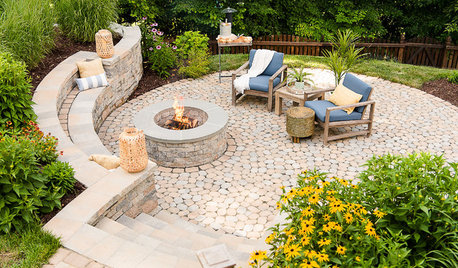
LANDSCAPE DESIGNHow to Design a Low-Maintenance Yard
See 12 ways to set up your garden so you spend less time working on it and more time enjoying it
Full Story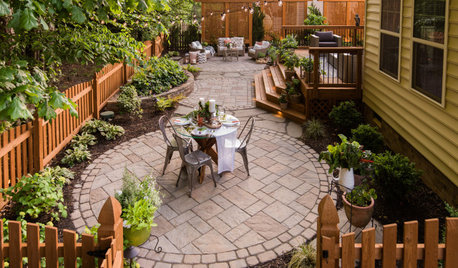
BACKYARD IDEAS10 Low-Maintenance Backyard Ideas
These outdoor spaces minimize yard work and keep the focus on fun
Full Story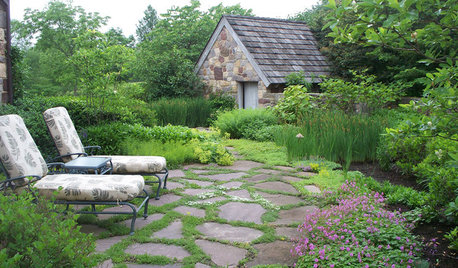
GARDENING GUIDESLow-Maintenance Ground Covers to Go With Your Pavers
These 8 plants will fill the spots between steppingstones, gaps in flagstone patios and other garden nooks and crannies
Full Story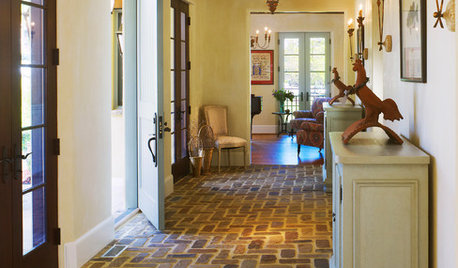
RUSTIC STYLEBrick Floors: Could This Durable Material Work for Your House?
You love the old-world look, but will you like the feel of it underfoot? Learn the pros and cons of interior brick flooring
Full Story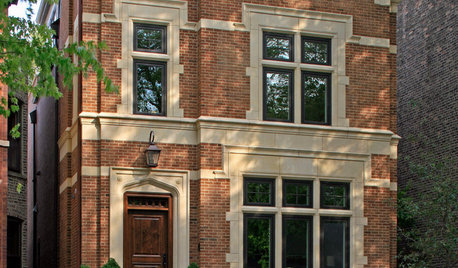
MATERIALSRaw Materials Revealed: Brick, Block and Stone Help Homes Last
Learn about durable masonry essentials for houses and landscapes, and why some weighty-looking pieces are lighter than they look
Full Story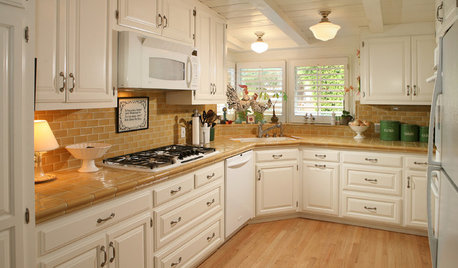
KITCHEN COUNTERTOPSKitchen Counters: Tile, the Choice for Affordable Durability
DIYers and budget-minded remodelers often look to this countertop material, which can last for decades with the right maintenance
Full Story
SELLING YOUR HOUSE10 Low-Cost Tweaks to Help Your Home Sell
Put these inexpensive but invaluable fixes on your to-do list before you put your home on the market
Full Story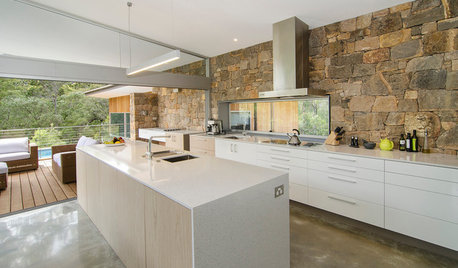
KITCHEN DESIGN11 Outdoor Elements for a Durable Indoor Kitchen
Consider brick, natural stone and other exterior-grade materials and elements for a rough-and-tumble space
Full Story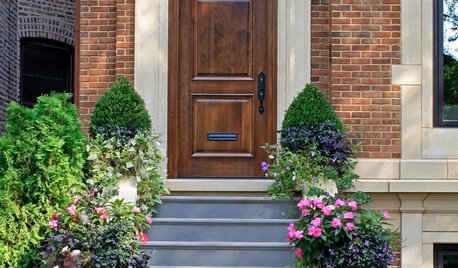
CURB APPEALKnow Your House: Anatomy of a Brick Veneer Wall
Brick's new role as skin versus structure offers plenty of style options for traditional exteriors
Full Story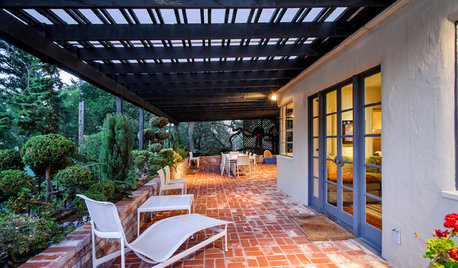
PATIOSLandscape Paving 101: How to Use Brick for Your Path or Patio
Brick paving is classy, timeless and a natural building material. Here are some pros and cons to help you decide if it’s right for your yard
Full Story


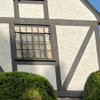



jmm1837